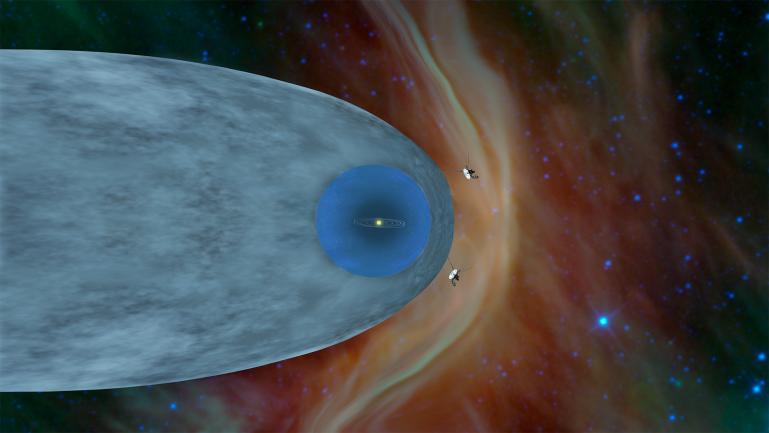The model of our solar system has two limitations. First, it does not account for the fact that the planets orbit the sun in different planes. Second, it does not explain why the planets orbit the sun in different directions.
To Scale: The Solar System
There are two limitations of the model of our solar system. The first is that it only considers the sun and the planets. It does not take into account the moons or asteroids.
The second is that it only considers the gravitational forces between the sun and the planets. It does not take into account the other forces that may be present, such as the electric force or the nuclear force.
Name Two Strengths of the Model of Our Solar System.
Most people are familiar with the model of our solar system, which includes the sun, planets, and moon. This model is a strengths for a number of reasons.
First, it is a simple model that is easy to understand.
The sun is at the center of the solar system, and the planets orbit around it. This model helps explain why the planets move the way they do in the night sky.
Second, the model of our solar system is supported by a great deal of scientific evidence.
We have been able to observe the planets and moons in our solar system with telescopes and other instruments, and this data supports the model.
The model of our solar system is a strengths because it is simple and supported by evidence. This model can help us understand the planets and their movements.
Explain How You Could Create a Better Model of Our Solar System.
There are many ways that you could create a better model of our solar system. One way would be to use more accurate data when creating the model. Another way would be to create a model that is more detailed and includes more of the planets and their moons.
Finally, you could create a model that is more interactive and allows the user to learn more about the solar system.
How Has Technology Changed the Amount And Type of Information We Have About the Solar System?
Technology has changed the amount and type of information we have about the solar system in several ways. First, technology has allowed us to collect more data about the solar system. We can now use telescopes and other instruments to study the solar system in greater detail than ever before.
This has led to a greater understanding of the solar system and its many features.
Second, technology has allowed us to share information about the solar system more easily. We can now use the internet to share information and discoveries about the solar system with people all over the world.
This has led to a greater understanding of the solar system by people of all ages and backgrounds.
Finally, technology has allowed us to create simulations of the solar system that can help us to understand it better. We can now use computers to create models of the solar system that allow us to see how it works and to make predictions about its future.
This has led to a greater understanding of the solar system and its potential for life.
Why is It Difficult to Make Models of Objects in the Solar System
It’s no secret that the solar system is a pretty big place. In fact, it’s so big that it’s actually quite difficult to make models of objects in the solar system. The reason for this is because the solar system is made up of a lot of very different objects, all of which have their own unique properties.
For example, let’s take a look at the sun. The sun is a huge ball of gas that is incredibly hot. It’s so hot, in fact, that it’s impossible to make a model of it that is accurate.
The same goes for the planets. Each planet is made up of different materials, and they all have different sizes. This makes it very difficult to make an accurate model of a planet.
The same can be said for the moons of the solar system. Each moon is different, and they all have different sizes and shapes. This makes it very difficult to make an accurate model of a moon.
The solar system is a very big place, and it’s made up of a lot of very different objects. This makes it difficult to make models of objects in the solar system.
What are the Three Criteria Used to Determine If an Object is a Planet?
According to the International Astronomical Union, there are three criteria used to determine if an object is a planet.
The first criterion is that the object must be in orbit around the Sun. This is what differentiates planets from asteroids and comets, which orbit the Sun but are not considered planets.
The second criterion is that the object must have enough mass to assume a nearly round shape. This is why Pluto, which is only about a fifth the size of Earth, is not considered a planet.
The third criterion is that the object must have cleared the neighborhood around its orbit.
This is why Ceres, the largest object in the asteroid belt, is not considered a planet.
So, to recap, an object is only considered a planet if it orbits the Sun, has enough mass to assume a nearly round shape, and has cleared the neighborhood around its orbit.

Credit: m.economictimes.com
What are the Limitations of the Solar System Model?
The limitations of the solar system model are that it only accounts for the effects of gravity and does not take into account the effects of other forces, such as electromagnetism. Additionally, the model does not take into account the effects of relativity.
What are the Limitations of a Model?
In statistics and machine learning, a model is a mathematical representation of a real-world process. Models can be used to make predictions about future events, or to understand the relationships between different variables.
However, models are limited by the assumption that they make.
All models are based on some set of assumptions, which may or may not be accurate. For example, a linear regression model assumes that the relationship between the variables is linear. If the relationship is not actually linear, then the predictions made by the model will be inaccurate.
In addition, models are also limited by the data that they are based on. If a model is trained on data that is not representative of the real world, then the predictions made by the model will be inaccurate. For example, if a model is trained on data from a single country, it may not be accurate when applied to data from another country.
Finally, models are also limited by the fact that they can only make predictions about the future, they cannot tell us why something happened in the past. For example, a model might be able to predict that a certain stock will go up in price, but it cannot tell us why the stock price went up.
These are just a few of the limitations of models.
Despite these limitations, models can still be useful tools for making predictions and understanding relationships between variables.
What are the Two Models of the Solar System?
Most people are familiar with the Solar System and the planets that orbit around the sun. There are two models of the Solar System, the heliocentric model and the geocentric model.
The heliocentric model, first proposed by Aristarchus of Samos in the 3rd century BCE, is the one most commonly accepted by astronomers today.
In this model, the sun is at the center of the Solar System and the planets orbit around it. The heliocentric model explains the observed motions of the planets better than the geocentric model and makes predictions that can be verified by observation.
The geocentric model, proposed by Ptolemy in the 2nd century CE, is an earlier model in which the earth is at the center of the Solar System and the planets orbit around it.
Although this model is no longer accepted by astronomers, it was the dominant view for over a thousand years.
What are the Limitations of Using Models in Science?
In science, a model is a representation of an object, system, or concept. Models are used to simplify complex phenomena, make predictions, and test hypotheses. Although models are useful tools, they have limitations.
One limitation of using models is that they are often based on incomplete data. This can lead to inaccurate predictions or conclusions. For example, a model of the solar system may be based on data from a limited number of observations.
This model would not be able to accurately predict the behavior of the solar system over a long period of time.
Another limitation of using models is that they are often too simplistic. This can lead to a false sense of understanding of a phenomenon.
For example, a model of the water cycle may only include the evaporation and precipitation of water. This model would not be able to explain the role of the oceans in the water cycle.
Finally, models are often static, while the phenomena they represent are dynamic.
This can lead to a mismatch between the model and the real-world system. For example, a model of the stock market may be based on data from a specific time period. This model would not be able to accurately predict the behavior of the stock market in the future.
Despite their limitations, models are important tools in science. They allow us to simplify complex phenomena, make predictions, and test hypotheses.
Conclusion
In this blog post, the author discusses two limitations of the model of our solar system. First, the model does not explain why the planets orbit the sun in the same plane. Second, the model does not explain the strange orbital patterns of some planets, such as Pluto.
